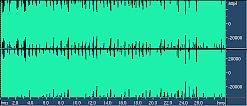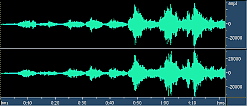

You mean instead of turning the loud tracks down? The simple answer is because it doesn't work well.
Here's the long answer. The loudest pop CD you have in your collection has probably been heavily limited or compressed. What this means is that the signal has been processed to raise the average amplitude, which makes it sound louder. You can do this by turning the volume control up, but there's a limit to how far you can go before things distort. Distortion occurs when you try and store a larger sample (louder peak) than is possible on a CD. If you do this, the signal clips. A limiter squashes all the peaks down, allowing you to turn the level up further before the signal clips.
The quieter CDs in your collection probably still have the peaks intact (unsquashed!). The music sounds more dynamic and exciting this way, though the CD will sound quieter on average. To increase the loudness of the quiet CD to match the loud one, we'd have to squash all those peaks. This would remove the dynamics and excitement from the music.
If you want to squash the peaks and increase the level, any Replay Gain compatible player will do this. You simply increase the Pre-amp gain, and enable hard-limiting. This will squash any peaks that would go into overload. If all your CDs are very loud, then there are probably no peaks to squash, and you'll do no harm.


However, if you have some tracks that start out like the one above right, and you really want to raise them to the same level as the one above left, you're going to squash a lot of peaks, and destroy the sound. This is why Replay Gain would normally make the pop track (above left) quieter, rather than making the classical track (above right) louder.